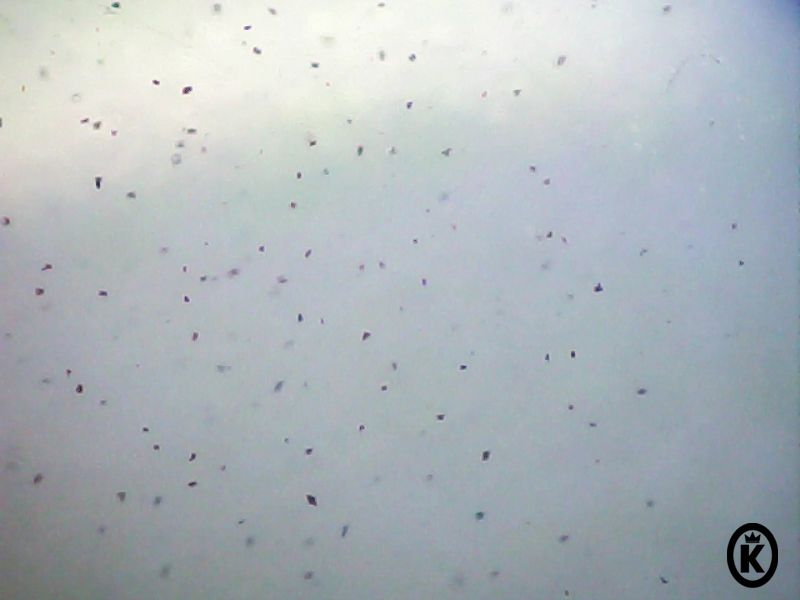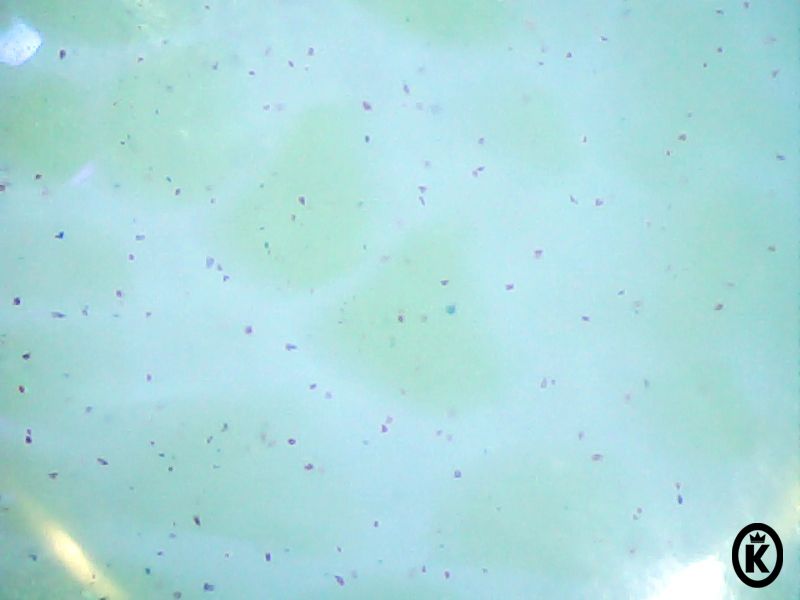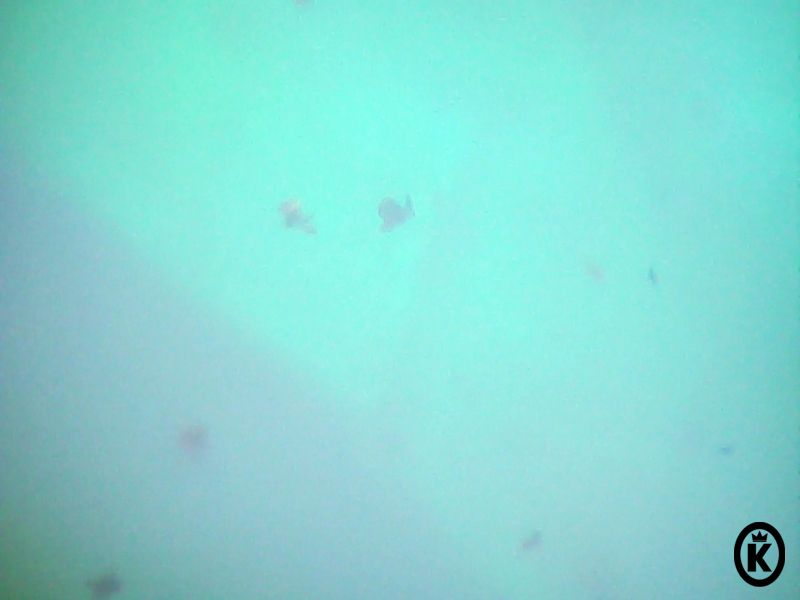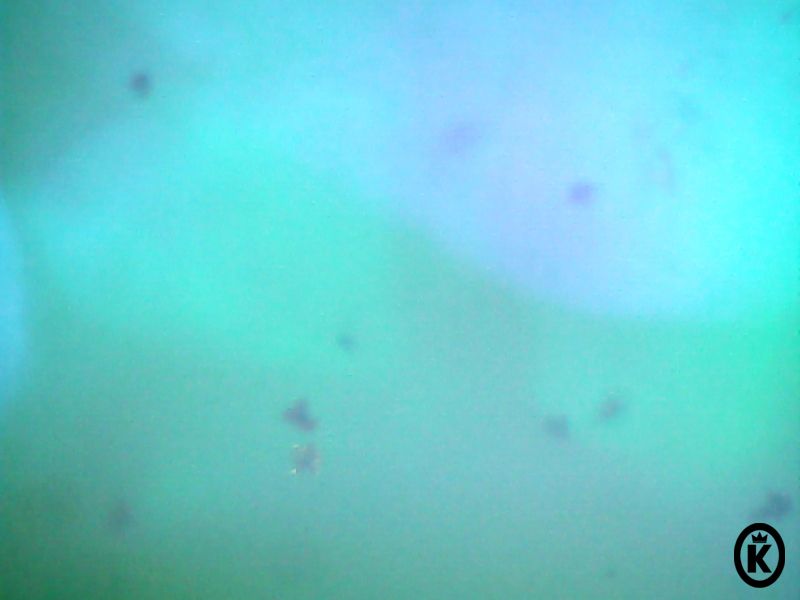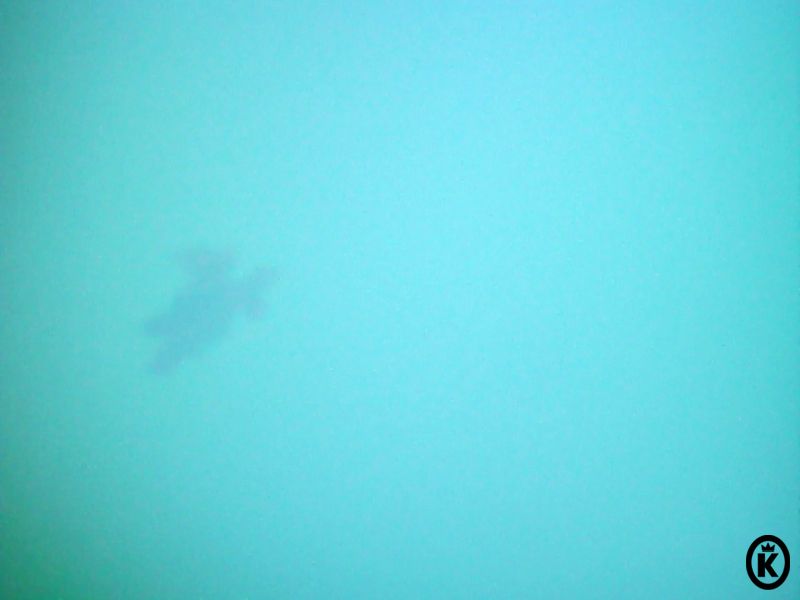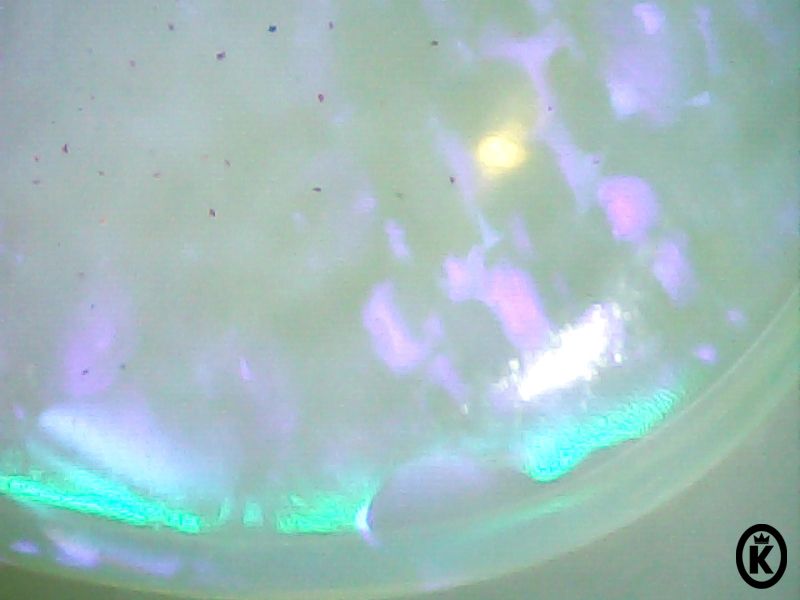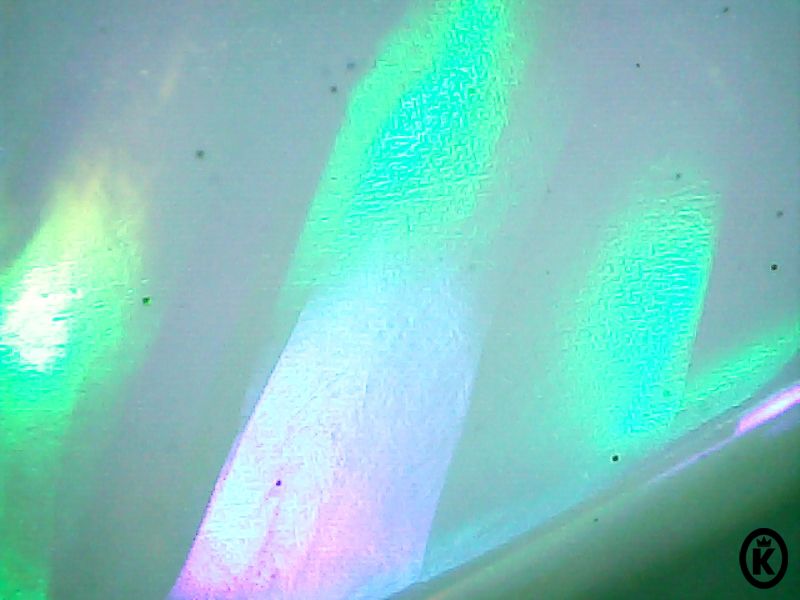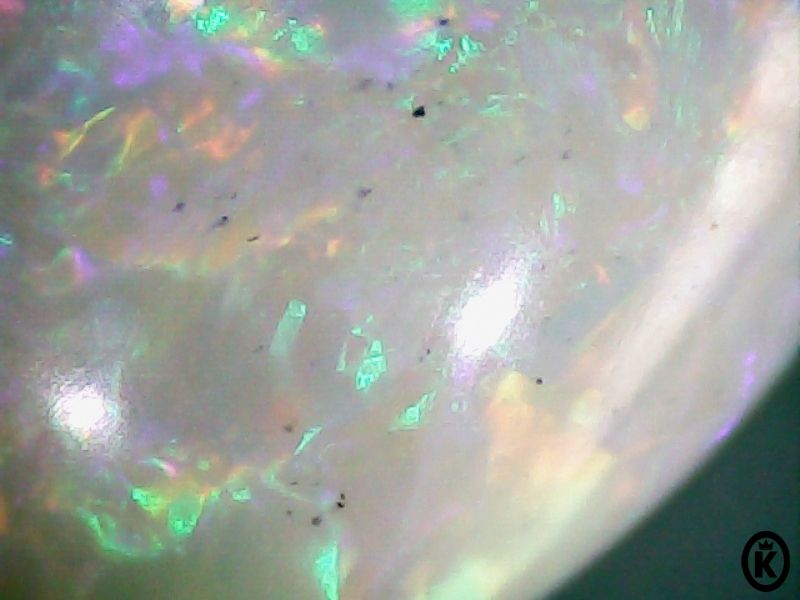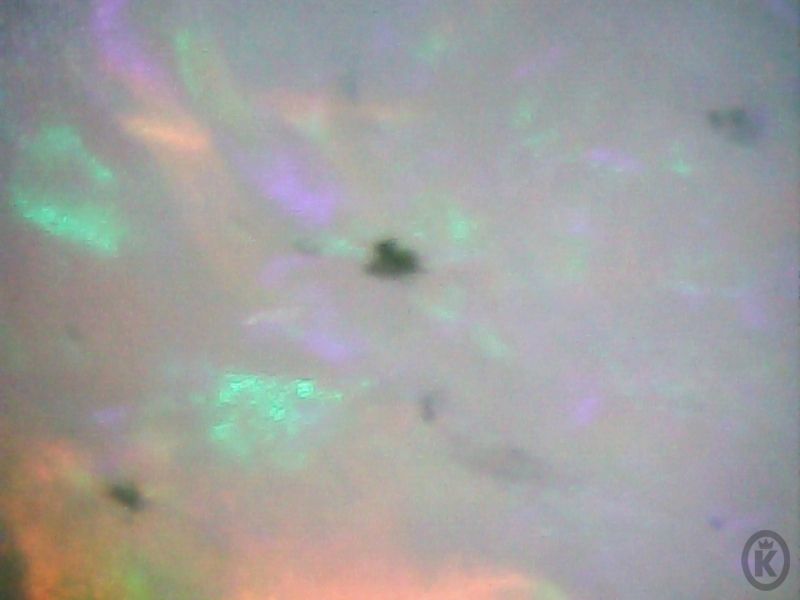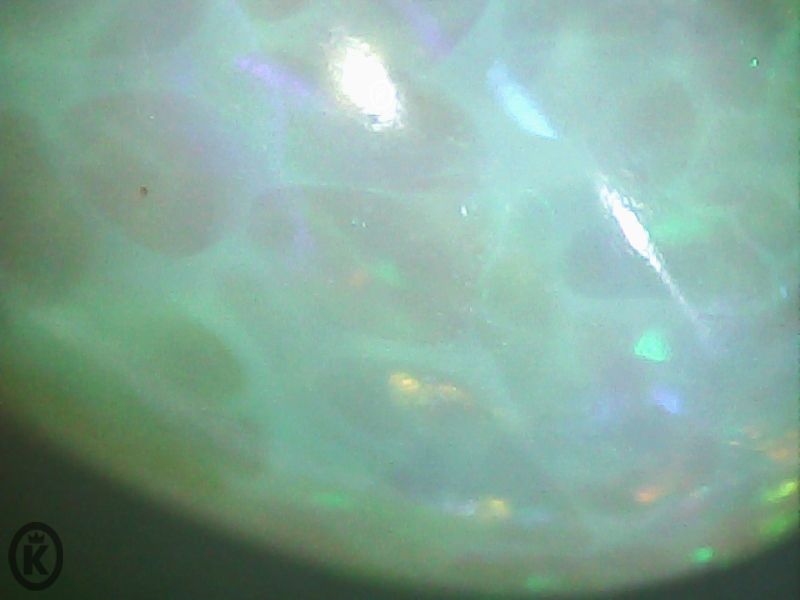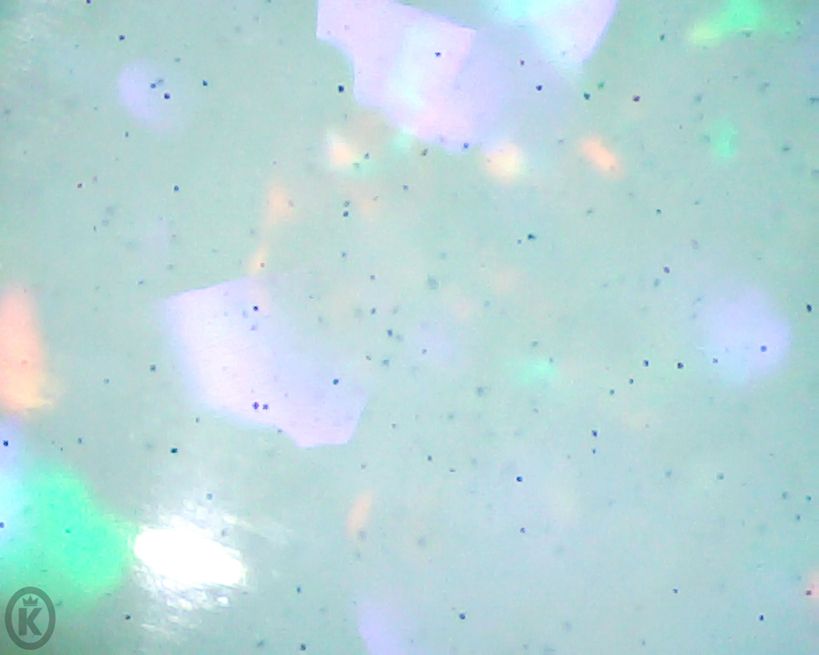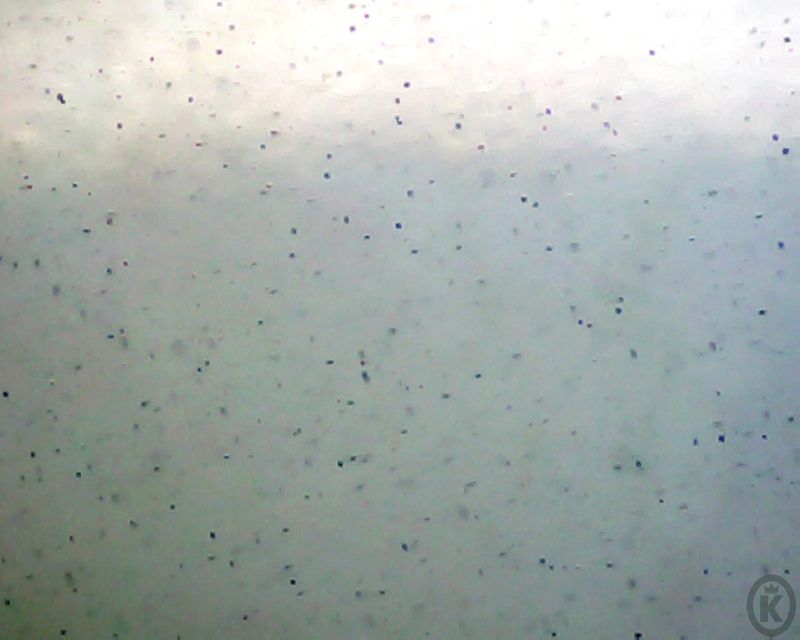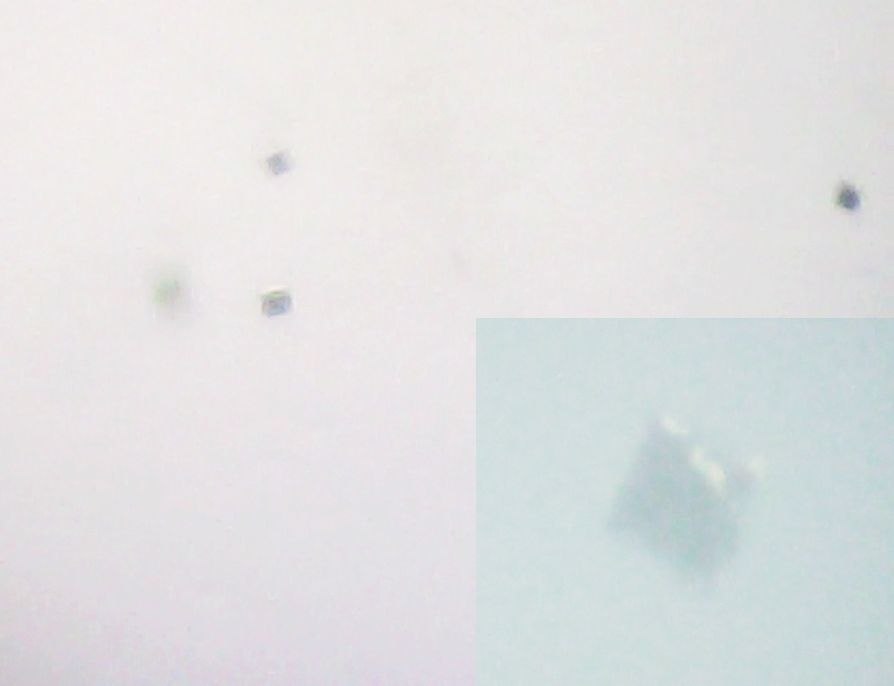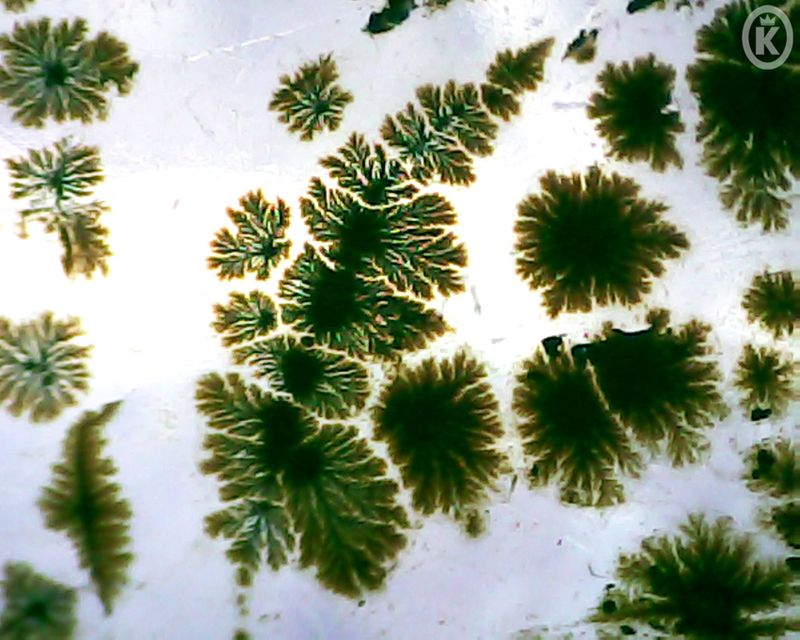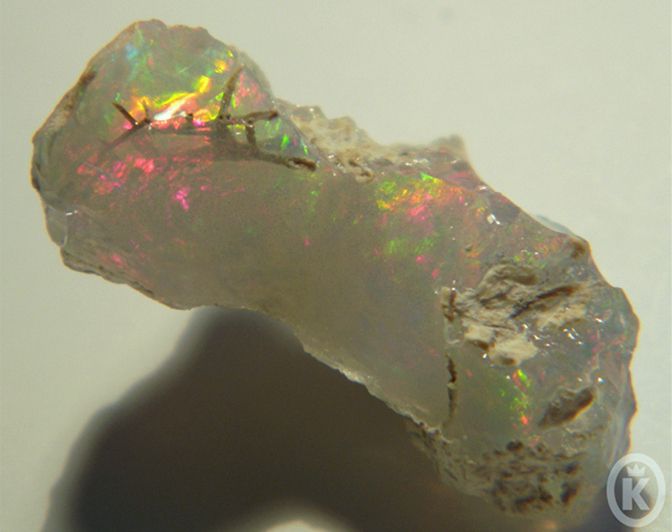let see what is inside
OpalSupreme wrote:recently I was playing with my opals and I've found something odd
this opal is really unusual Welo with odd honeycomb pattern mix but it's not about the pattern
there are funky 'dots' inside opal and most of them are pinkish in color

I've seen the 'dots' in opal before but not as much as here and dark or black
20x Zoom
here with different lightning and visible honeycomb webbing structure
80x Zoom
I managed to capture the fire
every 'dot' is on different dept so I was unable to focus
only 1 object is in focus and appear to be semi transparent
here the best shot at 350x Zoom
'alone in space'
and here few more with fire & pattern at 20x Zoom
1st - reverse effect
2nd - 'normal'
TobyBaptiste wrote:These little dots are not bubbles. I have had many and one just the other day that have these tiny inclusions of iron or something I have had them in black and the ones lately have been red in color. Like tiny red polka-dots floating in water, and are best viewed when the opal is fully hydrated and water clear under a good strong loop. Really cool pics thanks for sharing. I had some good pics but lost them all because I had no back up when I lost my OS.
OpalSupreme wrote:
yes Toby black/dark dots are more common but I wonder what is that 'red' stuff
here are other Welo with 'classic' black dots
and here Aussie with dark dots inclusions
& 80x
additional 1 other cool shot I did 'the full moon honeycomb'
enjoy
mick wrote:Ive seen similar in Aussie Opal, kinda looks like leaf matter when studied, but I think they are bacteria.
I think in Welo it could be ash, bacteria or some mineral. It kinda looks like it has been shot, not deposited or grown.
gingerkid wrote:One of the Australian cabs that I'm working on has 2 little "dendrites" in it. These are bacteria? I wondered if they might possibly be manganese oxide, iron oxide, or organic carbon? They look similar to the dendrites seen in some agate materials.
OpalSupreme wrote:I think bacterias are too small
this is organic / plant material
Welo & Aussie can have dendrites which are quite cool
OpalCreations wrote:OpalSupreme wrote:I think bacterias are too small
this is organic / plant material
Welo & Aussie can have dendrites which are quite cool
It's very interesting to contemplate what the earth looked like at the time this material was formed, and what creatures crawled around at the time (and may have gotten caught in it)....lol.
I've heard conflicting reports about when exactly this Welo material was formed, how old do you guys think it is??
Some people actually say it's only a couple thousand years old, while others say millions.
OpalSupreme wrote:
I founded one more with 'black dots' and I was surprised because I have this opal for quite long and never know there are 'dots' , before I didn't even checked this opal with magnifier because it's transparent crystal and you don't see any 'dots' with naked eye (the dots are super tiny)
I thought there are no 'inclusions' in the opal but now appear that there are thousands

also this one is odd because most of the dots are 'square shape' (photo 3)
photo 1. zoom 20x / light from the top
2. zoom 20x / light from the back
3. more zoom / square shape (sorry for poor quality)
****
and here some other cool pix 'Dendrite Pattern'
question >
is it possible that this dendrites are like 'footprint' of honeycomb/tubes/fern... patterns ?
because most of this tube / cells or webbing structures in Welo are looking like that but there are no dendrites
photo1 . dendrite pattern + inverted colors
2. best shot 'fern shape'
3. zoomed dendrite (sorry low quality again)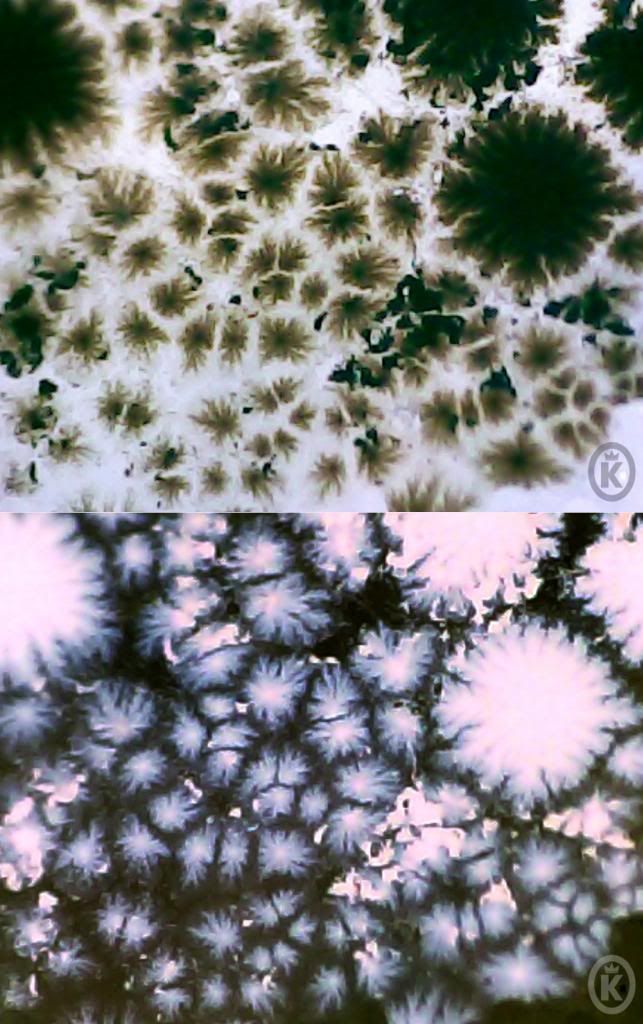
OpalCreations wrote:I'm glad we are discussing inclusions in Welo again, it fascinates me!
I am of the opinion that there still may be many many undiscovered types of Welo inclusions, simply because the deposits are sprinkled all around the countryside, not just in one specific spot there, (although obviously there is one main Welo deposit area) and ground conditions and mineral deposits are quite varied from place to place, maybe even different a few feet from one another.
I haven't handled hundreds of kilos of this material of course to get a wide varying sample of many specimens, but of the Welo I have handled, I've seen many interesting things "suspended" in this material.
I have not read all the scientific studies, so maybe I'm repeating things already known and classified, but I still maintain that part of the hydrophane structure in this opal consists of small tube like structures in "some" specimens. Why? Because I've seen them.
Ever notice how some pieces of rough literally stick to your partially wet finger if they are dry, while others don't? It's weird.
Why are some pieces more hydrophane than others? Why do some recover quicker from getting wet than others?
Regarding those black dots that seem to be suspended in the material, I've observed that some of these "dots" are just that, material or minerals (organic or other stuff) seem to get frozen in the rough as it solidifies, while others seem to be those tiny little tubes that are clogged with dirt in their ends.
I've had a couple pieces where these "tubes" seemed to have sucked up dirty water and you could literally see all these little strings inside the opal pointing towards the center of the nodule, very interesting.
Some of the pieces like shown in the pictures here are actually tiny crystalline structures, I wonder if those are formed inside the opal itself during some kind of electrochemical process, or if they are pre-existing and just got caught up in the suspension and remained there forever.
It would be interesting to get a analysis of what those little crystalline inclusions are, if we were looking at a sapphire for example, I would suspect zircon inclusions.
OpalSupreme wrote:there are plenty of undiscovered inclusions simply because most people don't look for them,
also when the opal is white, inside inclusions might be only seen when soaked with water
how the inclusions are getting inside ? i'm not sure
some appear to be 'frozen' inside like you said but other types are opalized = replaced by opal
before I thought the fern/tubes are opalized 'ferns' and other plant/organic material which was replaced by opal silica ..etc
but I had welo opalized branch (small piece) where the same fern/tube structure was inside (without visible potch/cells)
so if this was the case the 'plant like material' could not be inside the branch !
also I founded that in many welos there are different layers and when you have 'good' rough with cross-section (split in half vertically) you can see different layers of fire (in case of welo with potch it's easier to determine where is the bottom and see the layers)
* this is quite useful for good pattern orientation
even though there are tubes in each layer there are different pattens in every layer
in most cases the layer of fire are 'straight' and parallel to each other(horizontally) and the tubes are going 'up' vertically
this layers are showing how the opal grow (a bit like layers in quartz crystal), 1 layer can be very thin and the next one thick both without potch and webbing and the top 3rd one can have visible webbing ..
why the opal grew this way ? why there are 'tubes' ? I don't know
* 'the dots'
I though that maybe this dots are coming from the water but I don't think there are small enough to be soaked
although we know how good welo are for dying so who knows what 'they can suck it'
Welo are like leeches PinkDiamond wrote:Those fern inclusions are spectacular OpalS, and the square cubes mean the inclusions are something in the cubic crystal system, most likely pyrite.
PinkDiamond wrote:Those fern inclusions are spectacular OpalS, and the square cubes mean the inclusions are something in the cubic crystal system, most likely pyrite.
And the ISG was merely trying to figure out what was causing the plumes, and I believe the determination was iron oxides, but why they formed as they did was not investigated.
thanks Pink
I hope someone will find out soon.. but I don't think it will ever happen
OpalCreations wrote:Sorry for the barrage of questions, it's just how my mind works, I need to know things....lol.
I think my interest in inclusions stems from my love of sapphires, particularly Sri Lanan sapphires where the inclusions "authenticate" the stone.
If you don't see an inclusion in a sapphire, or at least some "silk" it should raise red flags, especially if a really nice stone is really cheap.
I've even had synthetic sapphires that someone took the time to laser drill as if to "pretend" they were drilling out a natural inclusion, which they sometimes do in a natural stone.
At least you "acknowledge" the existence of these tubes in Welo, I've had people tell me I'm crazy, even after posting pics of stones with these inclusions taken through my 40X inspection scope.
I did have one stone that I am quite sure was actually some kind of root embedded into it, it certainly looked like organic material and not like a mineral deposit or anything, I'll see if I can find pics of it, i sold it a couple years back.
Regarding those layers you mention, I often wonder if the formation of Welo type material happens over many seasonal flood cycles in the region, each adding an opalized layer in the pocket where the opal is formed.
Some of the Welo stones I've had looked almost like Australian seam opals, while most of them seem to form in nodules.
I am also convinced that electricity plays a role in forming opals in general, and wonder if some kind of electrolysis process may take out certain minerals like iron or magnetite and cause clumps to form in an opal, where it is then frozen in time forever, who knows.
Once I perfect growing my own opal in my lab I'll let you know!!
PinkDiamond wrote:Each type of gemstone is composed of specific elements that give each their distinctive chemical composition; ie: quartz is SiO2, silicon dioxide. Emerald, or green beryl, is an aluminum beryllium silicate as Al2Be3(SI6O18), while heliodor, or golden beryl, is slightly different as Al2Be3(Si6O16). Iolite is a magnesium aluminum silicate as Mg2Al3(AISi5O18), and jadeite is a sodium aluminum silicate as NaAl(Si2O6).
All those elements can sometimes be in the mix gemstones come from, and gemstones get their colors, as well as inclusions, from other elements being in the mix, so how do they get there?
Magma gushing to the surface forms gem-bearing igneous rock, and from magma intrusions we get pegmatite dikes, where magma, or even a hot water solution pushes into preexisting rock and melts it. The contact zone where the pegmatite intrusion and the host rock meet melts and then cools, and this is where gem crystals can form.
Pegmatite dikes generally have a high silicon content, and the melting host rock mixes with it adding other elements which gravitate together to form other gemstones, so you can have things like black tourmaline inclusions inside quartz, or hematite in opal, etc, or if there's enough of each you can find them embedded in, or sitting next to each other as large crystal formations.
Metamorphic rocks are frequently caused by the intrusion of a pegmatite dike, and are the result of great heat and pressure that causes rock to melt and reform, and it is when metamorphic rock is created that many gem crystals form such as ruby, sapphire, chrysoberyl and emerald.
All gems are colorless in their purest form. For instance, the pure form of colorless sapphire/corundum consists of one atom of aluminum, along with 2 atoms of oxygen; neither of which have color. So color has to come from something outside the basic structure, so what might be in the molten mix that would give us a ruby?
We would need a minute amount of chromium, and if it's there, as the liquid cools and the corundum is beginning to crystallize, the chromium will attach itself to the aluminum oxide molecule giving us a mixture of aluminum, oxygen and chromium, so we get ruby. If we have the 2 impurities iron and titanium, we would get a blue sapphire.
A molecule of beryllium aluminum silicate with no impurities is colorless beryl, but add chromium and it becomes emerald; add uranium and it becomes heliodor; add iron and it becomes aquamarine, so the color can come from minute amounts of other elements as impurities. There are other ways too involved to get into here, that would be impertinent to the subject matter anyway.
If the amount of the impurity in the mixture is great enough, that's the source of visible inclusions, other than any plant matter that survived the heat.
There's more to it than that, since this doesn't cover oil inclusions, or 2 or 3 phase inclusions, but hopefully those new to inclusions will get the gist of how other elements in the molten mixture get into gemstones and can affect them.
I just hope I helped more than I confused people.
